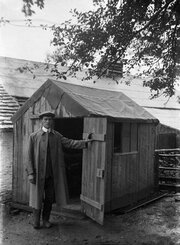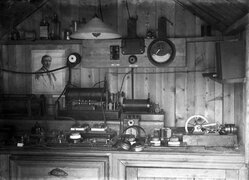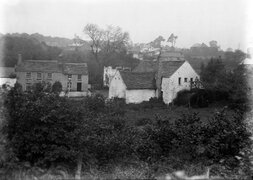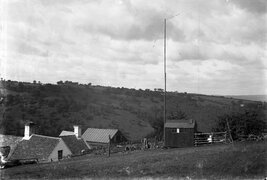
Titanic: Amateur radio heard SOS in Welsh town 2,000 miles away
Artie Moore's homemade station picked up the ship's distress signals - but nobody believed him.
www.bbc.co.uk

I think your probably referring to David Sarnoff.A very interesting link with very interesting information. I wonder what Julian Atkins - who is a south Welshman himself and has an interest in the Titanic related wireless messages - will think of this.
I recall reading in a book - I am almost certain it was the "Backwash Ashore" chapter of Wyn Craig Wade's Titanic: End Of A Dream - about an amateur operator on top of a New York building who also claimed to have picked up a few of the ship's distress calls. I don't have my copy to hand at this time, but perhaps one of the others can help?
Of course, New York was a lot closer to the sinking Titanic than Blackwood, Wales.

 ) but the Wanamaker Department Store certainly did. I recall that the operator I mentioned was on the top floor of the store late at night. If you Steven - or anyone else reading this - has a copy of Wade's book to hand, could you please check and let me know? I think it is in the "Backwash Ashore" chapter of the book.
) but the Wanamaker Department Store certainly did. I recall that the operator I mentioned was on the top floor of the store late at night. If you Steven - or anyone else reading this - has a copy of Wade's book to hand, could you please check and let me know? I think it is in the "Backwash Ashore" chapter of the book.Thanks for the info. I read the Wiki article on him. If it's true I guess I need to thank him when I warm up my coffee in the microwave. Cheers.Artie Moore lived a couple of miles from me at Gelligroes Mill. The BBC article referenced contains quite a few errors unfortunately. The Wikipedia entry is much better. He didn't cycle to Caerphilly police station (some distance away) but made his way to Ynysddu (where I live) to the police station there. Pretty much all of The South Wales Valley villages and towns had a police station by then.
He didn't make a model steam locomotive but a small horizontal steam engine.
In my opinion he must have been using the Ty Llwyd farm set up above Ynysddu, as Gelligroes Mill is at the bottom of the Sirhowy Valley and even today has very poor reception. My car radio gets a very poor signal as I drive past Gelligroes Mill.
I would like to hear from some of the radio guys on this board on that. I think it would be possible for him to recieve the signals if things were lined up just right. The way radio signals propagate off the ionosphere. But I could wrong about that. Not sure about the spark gap type signals. Only experience I have is on CB radio's. When skip was involved. I could here people talking from 1000 miles away. But if I moved 50 yards down the road I would lose them.I think that all that is online about Artie Moore comes from his obituary published in the newspapers at the time in 1949. Some of that may be inaccurate. But I can vouch for the 1909 award at the Model Engineering exhibition as I’ve read the Model Engineer article on that.
I’ve a week off next week so shall endeavour to access the original 1912 newspaper accounts on all this at the Gwent Archives. If someone has access to the newspaper archives online, they might save me a search! Arthur Moore of Gelligroes Mill Monmouthshire near Pontllanfraith and Ynysddu. In a map I have of 1921, Gelligroes is spelt “Gellygroes”.
In 1912 the road from Gelligroes to Ynysddu the B4251 as now is didn’t exist. It was a very old tram road dating back to 1826. Artie would have had to have used the old road which is quite high of gradients as it runs higher up The Valley from the bottom of The Valley where Gelligroes Mill is located on the river. A one legged man on his adapted bike or on foot? I have a recollection from somewhere that he encountered the Ynysddu policeman on this old road and provided the report to this policeman of matters relating to Titanic.
I don’t understand how Artie could have received the Titanic signals as Gelligroes Mill is situated in a considerable dip in the landscape of valleys. Including in the direction of any signals from Titanic.
You could be right. I don't know much about how radio signals work but have read a well researched and AFAIK authentic story about how in 1929 Boris Begichev, a Russian signaler based in Franz Josef Land near the North Pole exchanged brief greetings with John Tenner, an American working in the Antarctic at the time. I have heard other stories about signals being received in unlikely places, probably due to freak atmospheric conditions.I think it would be possible for him to receive the signals if things were lined up just right. The way radio signals propagate off the ionosphere
I think your probably referring to David Sarnoff.

David Sarnoff - Wikipedia
en.wikipedia.org







